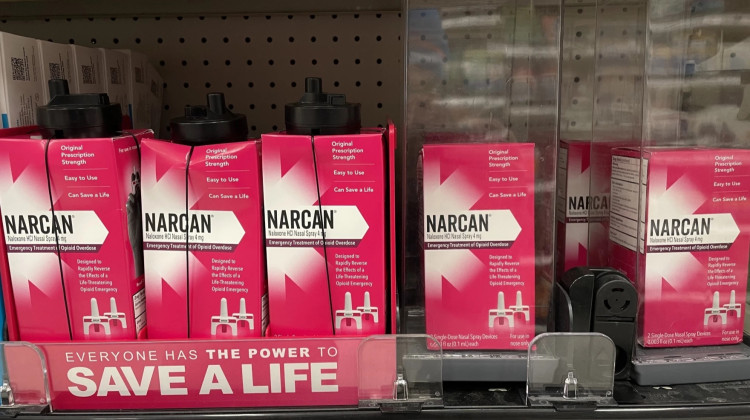
Open enrollment for the Affordable Care Act exchange starts Nov. 1.
Sarah Fentem/Side Effects Public Media
Open enrollment for the Affordable Care Act exchange starts this week. But customers shopping for 2018 plans may not get as much help as they have in previous years.
The federal government has cut funding for health care navigators in Indiana by 82 percent — a bigger cut than any other state receiving federal funds, according to the Kaiser Family Foundation.
The Affordable Care Act created the navigator program to fund professional helpers who assist people in signing up for health insurance on the federal marketplace. In the past, funding’s been based on the number of uninsured people in each state. But this fall, the Centers for Medicare and Medicaid Services decided to distribute money based on how successful an organization was at enrolling people in the past.
As a result, most states saw big cuts: Indiana’s total funding was cut from $1.6 million to close to $260,000.
Experts argue CMS calculated the enrollment numbers using an ID tracking number on each online enrollment application, and navigators might not have entered the data correctly or knew how important the ID number was. That could have lead to incomplete data for CMS to work with when calculating how money was distributed this year.
Additionally, the formula itself has problems, said analyst Shelby Gonzales of the Center on Budget and Policy Priorities.
“Unfortunately, that kind of falls short of really measuring a lot of the work navigators do," Gonzalez said, adding “They play a very vital role to the overall success of the marketplace.”
Julia Holloway, a navigator at the nonprofit Affiliated Service Providers of Indiana, said her navigators do more than just enroll people.
“Sometimes people come back and they’ve gotten some additional paperwork, or a question about their provider, or about how to pay their premium,” she said. Holloway said sometimes half a navigator’s appointments occur after people have been enrolled.
Gonzales says navigators help consumers understand their existing coverage and raise awareness of rules and deadlines for the exchange, too. (This could be important this year since the enrollment period is shorter by half.)
Gonzales said customers this year are confronted with “a whole lot of mixed messages,” including the Trump administration’s decision to discontinue subsidies to marketplace insurers and the president himself proclaiming “there is no such thing as Obamacare anymore” — even though several Congressional attempts to repeal the Affordable Care Act have been unsuccessful.
She said the cumulative effect of the maelstrom of misinformation and policy changes will be hard to measure.
“It’s certainly very difficult to attribute a reduction in enrollment because of just one of these items, because all of them are happening at once,” Gonzales said.
According to KFF, most navigator organizations are responding to the cuts by cutting staff. For example, ASPIN says it’s cut its navigator staff from 30 to 18 people, thanks to a funding change of nearly $700 thousand this year.
CMS said it’s focusing its energy on digital and texting outreach moving forward, arguing “these outreach methodologies have proven the most effective in reaching existing and new enrollees.”
Holloway said ASPIN is trying new digital outreach efforts this year, including texting services and a Pandora radio ad focused on rural counties.
Earlier this year, CMS announced it wouldn't be renewing contracts with certain organizations providing sign-up assistance for the exchange this year. Those organizations are not the same as the ones affected by the most recent round of federal funding cuts.
Close to 175,000 Hoosiers enrolled in the federal marketplace last enrollment period.
This story was produced by Side Effects Public Media, a reporting collaborative focused on public health.
 DONATE
DONATE









 Support WFYI. We can't do it without you.
Support WFYI. We can't do it without you.